
The International Society for Landscape, Place, & Materials Culture is pleased to announce the recipients of its 2021 Awards:
Henry H. Douglas Distinguished Service Award
From the award presentation:
It is our pleasure to announce this year’s winner of the Henry H. Douglas Distinguished Service Award. The Award is named in honor of the founder of our Society, Mr. Henry H. Douglas, and is given to an individual who has made significant contributions over the years in furthering the Society’s goals through service, teaching, publications, and/or the promotion of historic preservation.
The winner of the Douglas Award for 2021 is Sara Beth Keough, Professor of Geography at Saginaw Valley State University. Sara Beth holds dual bachelor degrees in History and Spanish from Jacksonville University. Her masters in geography is from Virginia Tech, and her Ph.D., with an award-winning dissertation entitled “Canadian Cultural Policy and Newfoundland Music on the Radio: Local Identities and Global Implications,” is from the University of Tennessee, Knoxville.
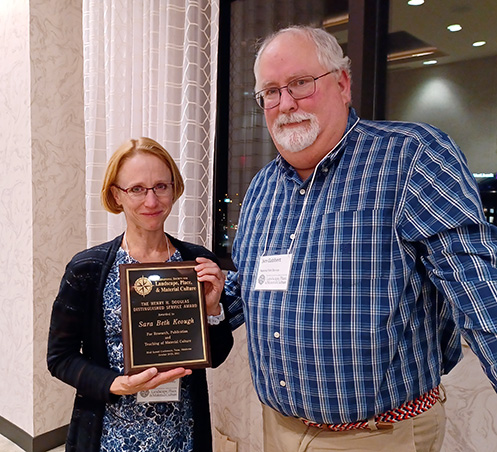
Sara Beth has a remarkable record of scholarship. She has published extensively on issues related to music, place, and identity; on water in West Africa; and other topics. The international component of her research is particularly impressive. She has conducted field research in Canada, China, Japan, and West Africa. For research in Niger and Senegal, she mastered both French and Hausa. She was a Fulbright Scholar in Niger. Her recently published book, Water, Life, and Profit: Fluid Economies and Cultures in Niamey, Niger, highlights problems of reliable access to safe drinking water faced by hundreds of millions in Africa through a deep dive into (and here I quote from the book’s introduction) “the people, economies, cultural symbolism, and material culture involved in the management, production, distribution, and consumption of drinking water in the urban context of Niamey, Niger.” Sara Beth has numerous other publications, far too many to mention, but I want to make note of one that will be of special interest to this audience. Sara Beth is editing The Handbook of Material Culture, soon to come out under Routledge.
Sara Beth’s success in the classroom is equally notable. She has been a key player in developing a robust program in Geography at Saginaw Valley State University, and she has been recognized multiple times by her university for those achievements. During her tenure, she has taught classes in human and physical geography, regional geography, urban and cultural geography, geographic education, and research methods.
In addition to being an outstanding scholar and educator, Sara Beth has served the International Society for Landscape, Place, and Material Culture in significant ways. Since 2008 she has served on the board and been Editor-in-Chief of the Society’s flagship journal, Material Culture. She launched two notable initiative to raise the journal’s profile among the community of scholars. Firstly, for annual meetings of the Association of American Geographers, she organized paper sessions on Material Culture and Geography that are recruiting venues for submissions to the journal. Secondly, she got the journal indexed in JSTOR, making back issues available online to subscribing institutions and raising awareness of the journal among researchers. Sara Beth also organized the 2019 annual meeting in Detroit, a monumental task as this year’s organizers will no doubt agree.
Please join me and my fellow Award Committee members, James Gabbert and Peggy Gripshover, in thanking Sara Beth Keough for all her contributions, past and to come, and in congratulating her on her most-deserved receipt of the Henry H. Douglas Distinguished Service Award.
– Jeffrey L. Durbin, Chair, Historic Preservation Awards Committee
Fred B. Kniffen Book Award
Modern Mobility Aloft: Elevated Highways, Architecture, and Urban Change in Pre-Interstate America (Temple University Press 2020)
Amy D. Finstein, Author
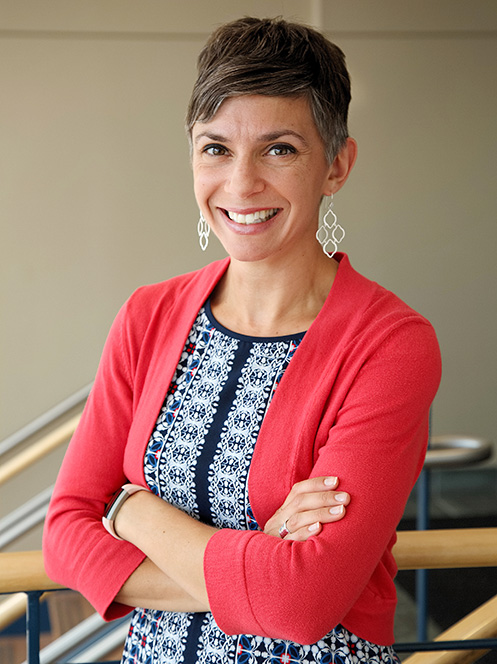
Amy Finstein is Assistant Professor in the Department of Visual Arts at College of the Holy Cross, where she teaches modern architectural and urban history. Her research focuses on how the desire to be “modern” has inspired diverse designs – ranging from high-style modern residences, to Art Deco elevated highways. She has published previously in Journal of Planning History, Preservation Education and Research and ARRIS: Journal of the Southeast Chapter of the Society of Architectural Historians, and is a contributing author to the award-winning Atlas of Boston History (Chicago 2019). She holds an M.A. and Ph.D. in Architectural History from the University of Virginia.
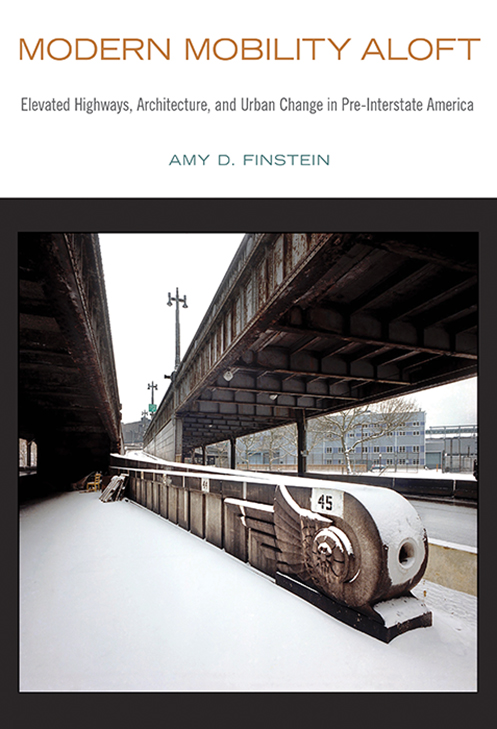
Allen G. Noble Book Award
The Oxford Handbook of History and Material Culture (Oxford University Press 2020)
Sarah Anne Carter and Ivan Gaskell, editors

Sarah Anne Carter, Ph.D. is the Executive Director of the Center for Design and Material Culture and an Associate Professor of Design Studies in the School of Human Ecology at the University of Wisconsin-Madison. She previously served as Curator and Director of Research at the Chipstone Foundation in Milwaukee, Wisconsin, where she collaboratively curated many museum exhibitions and led Chipstone’s Think Tank Program in support of progressive curatorial practice. She is author of Object Lessons: How Nineteenth-Century Americans Learned to Make Sense of the Material World (Oxford 2018) and co-author of Tangible Things: Making History Through Objects (Oxford 2015). Most recently she co-edited the Oxford Handbook of History and Material Culture (Oxford 2020) with Ivan Gaskell.
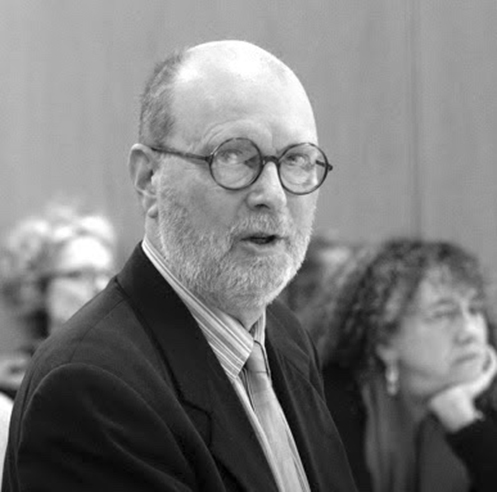
Ivan Gaskell is Professor of Cultural History and Museum Studies at Bard Graduate Center, New York City. Educated at Oxford, London, and Cambridge, he taught at Cambridge and Harvard before joining Bard Graduate Center in 2012. In 2016, he was appointed a Permanent Fellow of the Advanced Study Institute of the Georg-August University, Göttingen. His research centers on philosophical questions arising from writing history from tangible things. His latest monograph is Paintings and the Past: Philosophy, History, Art (Routledge, 2019).
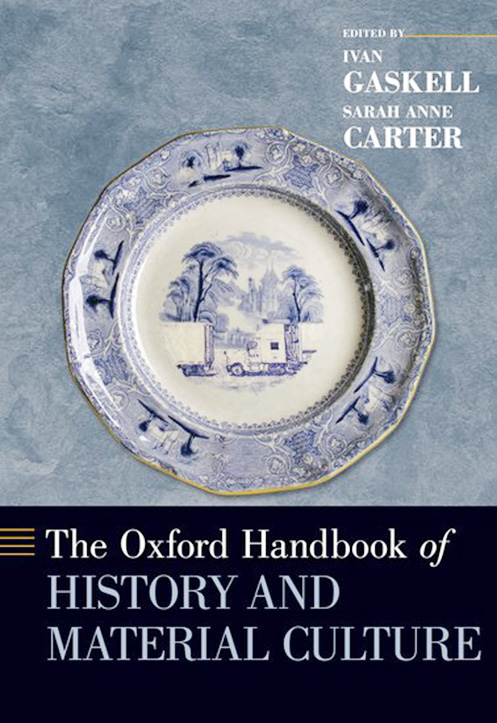
ISLPMC Historic Preservation Award
From the award presentation:
For the ISLPMC Historic Preservation Award , tonight we recognize Tulsa Foundation for Architecture. During the second half of the 20th century, Tulsa’s federally funded urban renewal program far outpaced the ones in many other communities. The program forever altered the architectural landscape of downtown Tulsa, as wide swaths of smaller-scale buildings dating to the early 20th century fell to the wrecking ball to make way for new development. While it gave the city several significant mid-century modern buildings, including the Minoru Yamasaki-designed Williams Tower, urban renewal also led to the abandonment of downtown retail for suburban malls, new highways that cut downtown off from residential neighborhoods, and gave rise to a rash of demolitions by downtown property owners for surface parking lots. By the late 1980s, much of Tulsa’s beautiful urban fabric had become a sea of asphalt.
 Williams Tower, Tulsa
Williams Tower, Tulsa
The Tulsa Foundation for Architecture (or TFA as it sometimes called) started in 1995 when local preservationists and architects banded together to help Tulsa “see itself and treat its built environment” with greater respect. Elaine Bergman, who was director of American Institute of Architects (AIA), Eastern Oklahoma at the time, joined with local architects Ted Reeds, Lanny McIntosh, Herb Fritz, and Leisa Marshall McNulty, and engineer Tom Wallace and realtor Marty Newman.
The Foundation has played a central role in helping give the city’s elaborate Art Deco-style buildings and other historic relics in the city a voice. With 26 years of experience under its belt, TFA continues to play an important role in protecting Tulsa’s historic buildings from being razed for new building projects, parking lots, and other urban renewal efforts that would have otherwise irreparably changed the city’s unique cultural landscape. The organization has instituted many programs that center on the value of good design in community planning and development. TFA continues to build on its original mission—serving as a resource that recognizes, records, and preserves the built environment. It also advocates for quality future development that enhances Tulsa’s livability. Creating a culture that embraces the value of Tulsa’s architectural history is central to TFA’s purpose.
TFA also offers tours that showcase Tulsa relics, owns, and maintains an extensive collection of original architectural drawings of many significant Tulsa buildings and residences, and preserves architectural records, periodicals (such as Progressive Architecture, Architectural Forum, and Architectural Record), historic photographs, and other artifacts. Efforts continue to process, catalog, and digitize the TFA archives to expand its availability both online.
The organization makes its home in the former Ponca City Savings and Loan building, a striking 1956 landmark designed by Tulsa architect Robert Buchner, now known as the Center for Architecture and Design. The building houses TFA’s offices and Archives, a library, a conference room, and exhibit space. TFA shares the building with AIA Eastern Oklahoma. From its base of operations, the organization uses broad-based fundraising efforts that meet operational needs and allow it to expand its mission-driven work.
In addition to being governed by a 16-member board of trustees and a 17-member advisory council, the foundation also employs two professionals. The first is their new Executive Director, Amber Litwak, who has over 20 years of experience in the nonprofit sector and has extensive experience in program development and evaluation, community partnerships, fundraising, strategic planning, and public presentation. Additionally, she serves as an adjunct professor in the University of Tulsa’s school of museum studies. The second professional is Ellen Stanley, who had become a volunteer soon after taking her first tour. Never afraid of public speaking, Ellen had spent decades teaching art, science, and outdoor education programs. She had also organized learning opportunities and entertainment for the young and old. After volunteering, she was soon leading and writing the organization’s tours before becoming Tours Coordinator nearly two years ago.
The ISLPMC historic preservation awards committee tonight recognizes the Tulsa Foundation for Architecture for its outstanding contributions to the recognition and preservation of Northeastern Oklahoma’s heritage and material culture. To receive the ISLPMC Preservation Award tonight is Ted Reeds, President of TFA, and Shane Hood, Board Member and Past President of TFA.
– Jeffrey L. Durbin, Chair, Historic Preservation Awards Committee
ISLPMC Historic Preservation Certificate of Merit
From the award presentation:
For the ISLPMC Historic Preservation Citation of Merit, tonight we recognize Greenwood Rising: Black Wall Street History Center, which interprets a very dark event that took place here one hundred years ago this past summer: the Tulsa Race Massacre, where for 14 hours a white mob raged, looted, ransacked, and set fire to 35 blocks containing Tulsa’s African-American businesses, institutional buildings, and houses. Even more shocking, hundreds of Greenwood residents were murdered and then callously placed in mass graves, which have only recently been confirmed by descendants collaborating with archeologists.
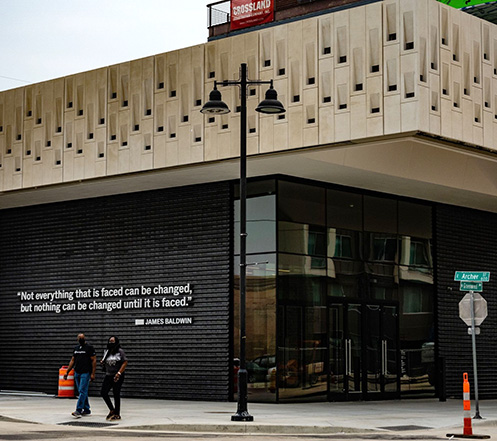 Greenwood Rising Black Wall Street History Center. (Photo by Chris Creese/ The Black Wall Street Times.)
Greenwood Rising Black Wall Street History Center. (Photo by Chris Creese/ The Black Wall Street Times.)
Numerous books have been published during recent years about the event, but just this past spring as the centennial of the massacre approached, newspapers described what happened here in very grim detail and in multiple articles. During late May and early June 2021, the New York Times alone published four different print articles and its website featured an online 3D model of Greenwood that gave readers a representation of what the neighborhood once looked like. On the cover of the New York Times Magazine was the face of 106-year-old massacre survivor Lessie Benningfield Randle.
Many of you got to visit the Greenwood area yesterday afternoon and not only saw the newly created memorial landscape there, but also toured the history center, which I have to say is the best local history museum I have ever visited. If you didn’t go on the tour there yesterday, I really encourage you to pay a visit to the museum and to John Hope Franklin Reconciliation Park before you leave Tulsa. If that’s not possible, be sure to read the information provided in your conference packet about the 1921 race massacre and the Greenwood district but also plan to return to Tulsa to visit Greenwood.
For those of us who have been fortunate to spend part of our careers in the identification and study of historic places and material culture associated with African-Americans, but also their food, music, traditions, and other folkways, we’ve just begun to understand how much black culture has greatly enriched white American culture. At the same time, I must admit that it was only recently that I began to clearly recognize the enormous debt that each of us owes to African-Americans, both living and dead. Undoubtedly, the US itself would not exist but for the tremendous contributions black Americans have made to the continual advancement of our nation.
More importantly, Greenwood Rising is a powerful reminder that the American landscape is littered with numerous tragic places that represent the incredible pain and suffering that our people and our institutions have caused or endorsed. Various forms of white oppression, hostility, and violence weave throughout the fabric of what we study and recognize as critically important to telling the American story. As an organization that seeks to raise awareness about the importance of places, landscapes, and material culture, ISLPMC has a solemn obligation to always expand the breadth of what we study. We have a responsibility to help institutions such as Greenwood Rising and John Hope Franklin Reconciliation Park as places of healing. We need to help with the healing, not just at this meeting and at other conferences, but also in our classrooms, in our writings, in our conversations with our peers, and throughout what we advocate and promote.
With that in mind, the ISLPMC historic preservation awards committee would very much like to recognize Greenwood Rising as an important ally in our endeavors to provide a more complete representation of what we call the past. And so, we regard Greenwood Rising as our newest friend. To receive the ISLPMC Citation of Merit tonight is Phil Armstrong, project director for the 1921 Tulsa Race Massacre Centennial Commission and Interim Director of Greenwood Rising.
– Jeffrey L. Durbin, Chair, Historic Preservation Awards Committee
